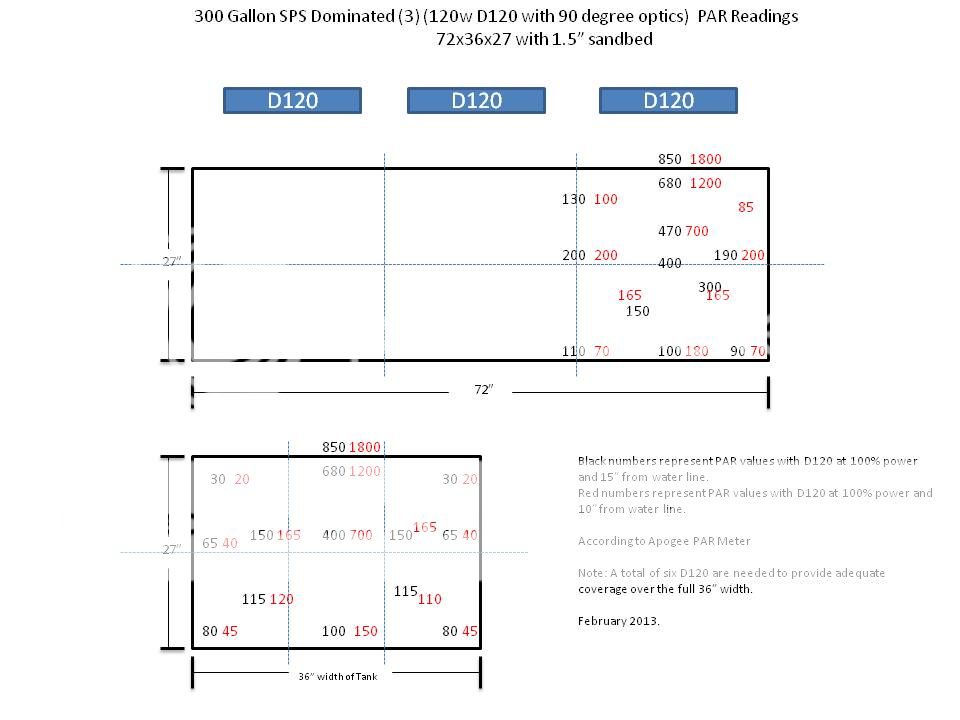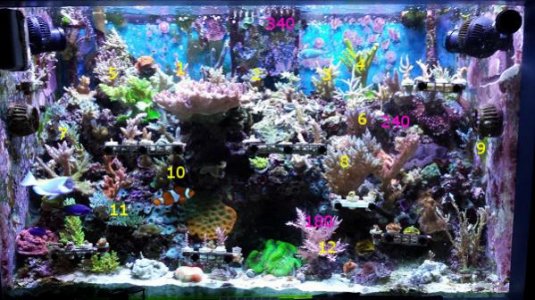A friend of mine stopped over today to give me somme PAR readings. I have 2 250 Watt DE MH bulbs in Hamilton Reefstar pendants using the Hamilton magnetic HQI ballasts.
I have a 65 gallon tank which is 36 wide, 18 front to back and 24 inches deep. The lights are 13 inches above the water.
I didn't take many but here are some readings using 14K Phoenix bulbs and two Kessil A150W Ocean Blues. The following readings are down the center.
440 just above the water
340 just below the surface
240 halfway down.
180 about 3 inches above sand bed
With a 20K Ushio on the left and 20K Hamilton on the right and the Kessils
Ushio Side
230 just below the surface
160 halfway down
Hamilton Side
300 just below the surface
200 jalf way down.
140 about 3 inches above sand bad
Kessil A150W Ocean Blues only
100 just below the surface
80 halfway down
My acros have great color and growth. Before, the Phoenix were just 5 inches above the water and the color wasn't as nice. I always assumed I had too much par before.
I think this tells me that acros really don't need super high PAR values, at least when using metal halides.
I have a 65 gallon tank which is 36 wide, 18 front to back and 24 inches deep. The lights are 13 inches above the water.
I didn't take many but here are some readings using 14K Phoenix bulbs and two Kessil A150W Ocean Blues. The following readings are down the center.
440 just above the water
340 just below the surface
240 halfway down.
180 about 3 inches above sand bed
With a 20K Ushio on the left and 20K Hamilton on the right and the Kessils
Ushio Side
230 just below the surface
160 halfway down
Hamilton Side
300 just below the surface
200 jalf way down.
140 about 3 inches above sand bad
Kessil A150W Ocean Blues only
100 just below the surface
80 halfway down
My acros have great color and growth. Before, the Phoenix were just 5 inches above the water and the color wasn't as nice. I always assumed I had too much par before.
I think this tells me that acros really don't need super high PAR values, at least when using metal halides.



